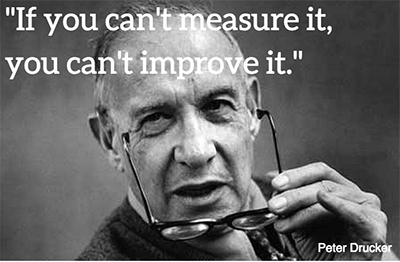On the field of disputes around the methodology for calculating procurement savings, there has already been enough crossing of swords. Yes, indeed, there are no uniform universal calculation rules. However, you should always remember the goal: the calculation of savings should reflect the contribution of Procurement (as functions) to the result of the company!

Why is it important to have this methodology in the company? As Peter Drucker said: "If you can't measure it, you can't improve it." To manage something, you always need to have key performance indicators (KPIs). Each profession has its own specific indicators, quantitative and qualitative. A common requirement of owners / executives: “Show me the money?”. But not all indicators can be directly seen in the profit and loss statement (P&L) of the company. For example, at the seller in the store, one of the main KPI is the quality of customer service, and at the engineering service, the uninterrupted operation of the equipment. These indicators are not in P&L, but they affect it in the most direct way.
And what about Procurement? A key performance indicator is Savings. And here a trap arises! Since Savings, you say, it means you can definitely see it in P&L - this is the same cost reduction! Yes, indeed, but this is only half true. For example, we purchased a cleaning service for 100 rubles / sq. M. per month, and after the tender, the price became 95 rubles - costs reduction is 5 rubles (or 5%). And we will see a 5% reduction in cleaning costs in the P&L statement. Excellent! Another example, we decided to equip a relaxation room for our employees: to buy furniture, flowers and a coffee machine. We organized a tender, drew up the specification, received proposals from various suppliers with a range of 230,000 to 320,000 rubles. Having negotiated with suppliers, we received a cost of 200,000, made contact and made a purchase. Did we get savings? Although we have achieved a cost reduction of 30,000 rubles (or 13%) of the minimum offer, but what will we see in P&L? According to the expense “Office Improvement”, last year it was 0 rubles, and this year 200,000! “No saving,” you say. But how so? Procurement also worked, conducted a tender, sought to reduce the cost! Everything is very simple, there are two types of Savings:
- Cost reduction
- and Cost avoidance
The peculiarity is that you do not see the cost avoidance in P&L, but without conducting procurement procedures and negotiations, the cost for equip room would be at least 230,000 rubles, not 200,000.
And here I already hear the voices of skeptics who say: “Wait, but we cannot constantly show cost reductions on regular procurement!” The market is growing, we put it in the Budget and then we look at how much we managed to spend less than the budget - this is the savings. Or in the case of the relaxation room, you say: “Just a minute, we have a Budget in P&L, as many as 350,000! And we spent only 200,000, which means 150,000 saved!”. So, let's talk about it.
Let's start with a Budget. And what is a budget and how is it formed? I have been working with budgets for about 20 years and have gone through all the stages: preparing and defense a budget (as the owner of the budget), validation of a budget (as a chief and director) and managing a budget on the part of Procurement (as the chief of performance at procurement).
So, there are two main reasons why it is incorrect to use Budget indicators in evaluating procurement savings:
- Firstly, the budget is inaccurate, it is often overestimated and includes inflationary expectations;
- Secondly, procurement savings should already be included in the Budget.
Budget accuracy
And what is a Budget? In plain language, this is a document reflecting a plan of income and expenses of future periods. The word "future" is key here! A budget for the next year (Y+1) is sometimes started to be planned from the middle of the current year (Y) and the Budget is validated before the start of Y+1. Often the final budget (company goals) for Y+1 is an internal document, and companies do not disclose its details.
Thus, a budget begins to be planned based on a partial Realization (for example, from January to August) and a Forecast (from September to December), i.e. data is not accurate.
The next factor influencing accuracy is the valid stereotype that “It is better not to exceed a budget in the process of work”. If you are “on the Budget”, then usually no one asks questions about your expenses, but if you start to go beyond the limits, you often have to explain why the Budget is exceeded, and sometimes ask and justify an additional budget. Therefore, the owners of a budget have an incentive to lay it "with a margin" and used a wide range of tricks for that.
A budget of expenses is usually planned from a budget of sales / production (and not only its variable part), i.e. a expenses hypothesis is based on the income hypothesis.
If we talk about a budget of one-off projects, for example, we need to purchase new equipment next year:
- At the budgeting stage, as a rule, there is no exact Technical Specification, design documentation ...;
- A very conditional request is made to one or two suppliers with the wording “we need it for a Budget”;
- The supplier often does not understand all the details - it is over require;
- The supplier understands that “this is for the Budget”, so you need for over require;
- The supplier understands that there will still be a tender next year, so, he needs to over require;
- Neither the supplier nor you know what the dollar exchange rate will be, so you have to over require (sometimes both sides do it);
- Neither the supplier nor you know what will happen to inflation, so you need to over require (again it happens that both sides do);
- Having received a supplier’s offer, you still need to “defense” your budget from the manager, therefore - “ask for more, receive less!” Or “if you want to get the maximum, ask for the impossible!”
Also, this logic partially works to calculate the cost of production.
We have already mentioned the inflation factor, but it is sometimes used in planning large budget items, for example, regular services (security, cleaning ...): Forecast figure (Y) *% inflation or (% inflation - X%), where X% is the value "Containment of inflation." For example, now security services cost 200 rubles per person per hour, inflation vision - 5% for next year. You can, of course, put the price of 210 rubles to the Budget, but by laying down an increase of only 3% or 206 rubles, you demonstrate your ambition to keep costs down. But this logic may have nothing to do with the real market and as a result of the tender you can get a cost of 180 rubles, or you can get 220.
Sometimes it simply fails to increase the expenditure, and then they begin to increase the sales / production budget.
As a result, the Budget is a compromise document containing a number of toxic factors.
Normal budget accuracy is +/- 15% of realisation. Those. budget figures are just an estimate. How can the procurement savings from valuation be considered, and what will this “savings” represent in the end? I already don't speak here about the passion to “disburse the Budget”.
Procurement Saving should be budgeted
The procurement department, like all departments of the company, should be involved in budgeting process.
Procurement manage their perimeter - these are current and new regular, as well as one-off projects. The norm is a situation where procurement sets goals for these projects and these goals are laid down in the budget of the company.
For example, in the case of cleaning:
- This year, the cost of cleaning 1 square. m per month - 100 rubles;
- You see the potential and plan to reduce to 97 rubles;
- This decrease of 3% is included in the budget of the company;
- And the savings, of course, are calculated not from the budget, but from last year’s indicators, i.e. 100 rub. - 95 rub. = 5 rub. or 5% savings.
One-off projects should also be planned together with Procurement and budgeted, taking into account the implementation of tender processes. And cost avoidance (the second type of saving) for one-off projects = Cost of the first best offer - Cost of the final offer of the selected supplier.
But you may ask: “But when we formulate the budget, we also request an offer and put it in the budget, does it mean to correctly consider the savings from the budget?” No, and here's why:
- The difference in terms between budgeting and the start of a tender can be from 3 months to 1.5 years;
- Request “for the Budget” and request for proposal are two different things, including in the understanding of suppliers;
- Specification are often not developed at the budgeting stage and are conditional.
Conclusion
We should always remember the purpose of calculating savings - this is a reflection of the contribution of Procurement to the result of the company! Saving indicators should inspire confidence in Procurement within the company, which is why Procurement themselves should be as critical as possible to the methodology for savings calculation. In all cases where it is possible, for example, with regular purchases, the result should be visible in the profit and loss statement of the company - cost reduction.
The difference between the Budget and the Realization in the P&L statement is an indicator of how the company is implementing the plan and an indicator of the need for corrective actions. But this is not Procurement Savings!
Of course, the question of the methodology for calculating procurement savings is very extensive and we consider it in detail in our course “Procurement Analytics”), and also develop methodologies targeted for companies (link).
Another important factor that we have just touched upon in this article is Inflation. It deserves a separate detailed review, which I will do in the next article, “Procurement Saving vs Inflation.” In the meantime, send me your questions and comments.
